15 Helpful Differentiated Instruction Strategies for Effective Teaching in 2023
As teaching methods continue to evolve, teachers must be equipped with differentiated instruction strategies if they want their students to succeed.
What is differentiated instruction? It’s when a teacher recognizes the varying learning needs within the classroom and adapts lessons accordingly. By responding to learner variance through tailored approaches, educators can create a personalized experience for all learners that fosters true academic growth.
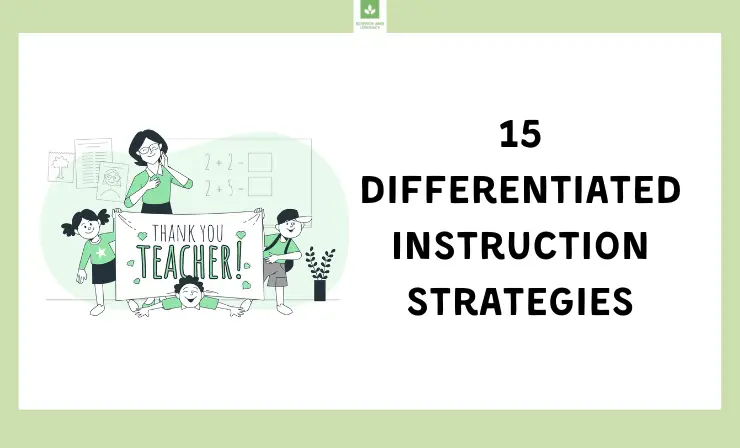
Differentiated instruction allows educators to tailor their teaching approach, providing each student with the opportunity to learn in a way that works best for them. Through strategic use of varied strategies & techniques, teachers can create an inviting environment where all learners feel supported and understanding increases at every level.
Differentiating instruction is essential for engaging all learners. Teachers can create independent projects based on each student’s strengths and interests, or provide varied assignments with the same learning goals. To effectively differentiate, teachers must also make sure to simultaneously accommodate individual learning styles by providing unique opportunities to learn in an interactive environment. The teacher becomes a facilitator who guides students through their own journey of growth and discovery.
Want to create an equitable learning environment? Learn how differentiating instruction can help meet the needs of diverse learners. Discover 15 differentiated instruction strategies with practical examples, from formative assessment and grouping by ability levels to using manipulatives for all ages, that you can implement in the classroom! Equip yourself today and unlock the potential of each learner in a meaningful way:
- It can be beneficial for kinesthetic learners who benefit from hands-on activities, such as building or experimenting.
- Learning stations can also help teachers manage large class sizes by breaking students into smaller groups and rotating them through different activities.
- Tiered assignments provide an effective way to engage the classroom, offering various levels of complexity or depth for students at different skill and learning levels.
- It also provide students with the ability to select an appropriate level of challenge, helping foster engagement in their learning process.
- By encouraging an interest-led approach to learning, students can be inspired and motivated as they have the opportunity to delve into topics that spark their curiosity while also connecting them with real-world applications.
- It can foster creativity and promote critical thinking. Students have the freedom to direct their own education journey, giving them more ownership of their development.
- For students who demonstrate advanced mastery of a particular subject, curriculum compacting can open the door to more intellectually stimulating and challenging work.
- Teachers can use the extra time to focus on providing students with more personalized instruction in areas where they need it most.
- Graphic organizers provide visual learners with the opportunity to organize and comprehend complex concepts in a visually-appealing way.
- These tools can help to make learning more engaging by allowing students to benefit from their spatial thinking abilities.
- Students can find new relationships between concepts and broaden their knowledge base with the help of this tool.
- Student autonomy is paramount to cultivating a motivated, engaged learning experience.
- Teachers can provide personalized instruction through student choice, letting learners explore activities and assignments that best suit their individual learning styles.
- By utilizing flexible grouping in the classroom, teachers can tailor instruction for their students by organizing them into groups based on individual learning styles and strengths.
- You can encourage collaboration between students while broadening each other’s horizons with different viewpoints.
- A learning contract can be an invaluable asset for students looking to take charge of their educational journey.
- By establishing personal goals and a plan with measurable progress, these contracts provide the structure needed to track success every step of the way.
- You can encourage accountability and optimize progress tracking.
- Technology integration opens up a world of learning possibilities for students, allowing them to explore and gain an enriched understanding of the content at hand.
- It also unlocks new possibilities for teachers, offering a wide range of resources to meet the unique needs of each student.
- Through project-based learning, students are equipped with the skills to think critically and solve real-world issues.
- Students can gain hands on experience while developing essential problem solving abilities in a fun and engaging way.
- Through peer teaching, students gain an opportunity to deepen their understanding of concepts by taking the lead in explaining and showing them to others.
- This collaborative approach reinforces knowledge through a more interactive process than traditional learning methods can offer.
- By implementing multisensory instruction, teachers can create a stimulating learning environment that caters to students with varying skill sets and styles.
- This type of teaching engages learners using visual aids, auditory prompts, or even hands-on activities – all great tools for cultivating knowledge in today’s classroom.
- This approach enables students to hone their skills and reinforce learning in a way that best suits their individual needs.
- Assigning personalized homework can equip teachers with invaluable insight into each student’s development, allowing them to tailor instruction for improved learning.
- Open-ended questions nurture development of key skills needed in problem solving, critical thinking and creativity.
- By answering these types of inquiries, students build their competency for thoughtfully evaluating unfamiliar problems.
- Formative assessment gives teachers the opportunity to optimize instruction and provide meaningful, timely feedback to students.
- It facilitates an interactive learning environment that encourages growth through constructive dialogue.
What are we waiting for? Let’s begin!
1. Learning Stations
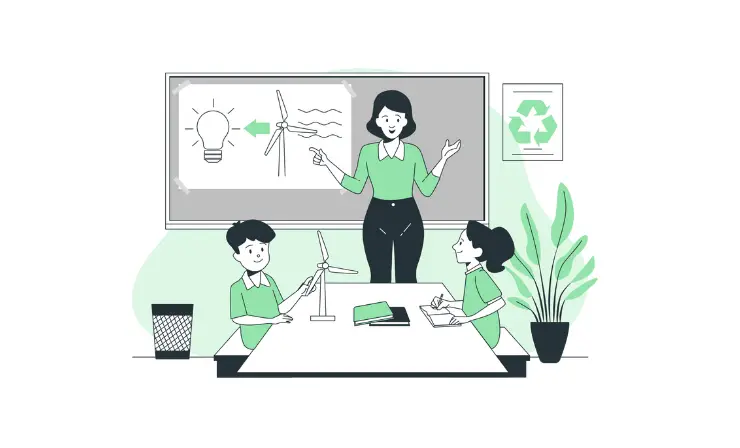
This instructional strategy encourages exploration and self-paced learning by setting up various centers around the classroom. By allowing students to interact with these interactive stations, they can develop an in-depth understanding of concepts and skills that is tailored to their individual needs.
Examples of Differentiated Instruction
- A language arts class could provide varied and stimulating learning experiences with the introduction of three unique stations, tailored to different student needs. Through reading activities at one station, writing tasks in another, and opportunities for students to explore digital tools at a technology focused corner – all types of learners can engage their creativity while having fun.
- From creative writing exercises to honing their grammar skills, middle schoolers get a well-rounded English education by journeying through an array of interactive stations. With stimulating activities and vibrant materials at each stop along the way, students engage in independent or collaborative learning experiences that elevate them beyond just reading and writing drills.
- At this high school science class, students explore the subject through a multitude of interactive activities. Through lab experiments, data analysis and research tasks that tap into various learning styles and abilities – all with an opportunity for collaboration amongst peers in pairs or small groups!
- Elementary students are honing their math skills with a rotation-style classroom experience that puts the focus on hands-on manipulation, technology resources and teacher guidance. With this approach, pupils can maximize potential by tackling challenges at an individualized pace and level of understanding.
Check out how Elizabeth from The Kinderhearted Classroom Channel organizes her centers and stations in the classroom.
2. Tiered Assignments
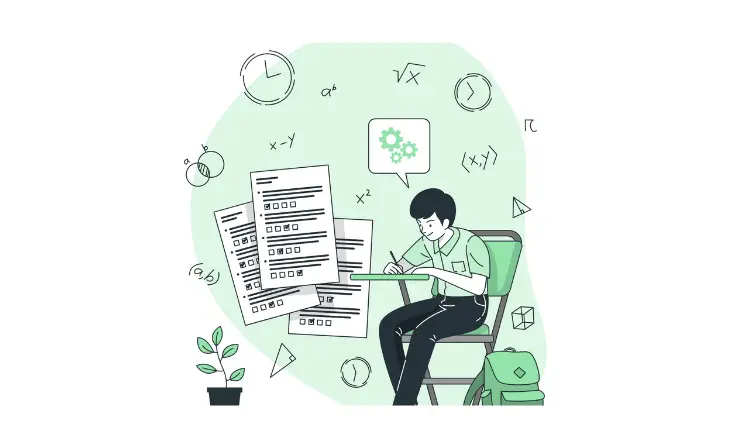
This strategy caters to each student’s individual preferences and level of knowledge by providing assignments tailored specifically for them.
Examples of Differentiated Instruction
- Social studies classes offer students the chance to explore a variety of perspectives, with activities ranging from constructing timelines and reports to delivering presentations. Each assignment is tailored around specific historical events, allowing for an in-depth understanding of their context and legacy.
- In a social studies class, students are empowered to select their own challenge level as they explore an intriguing historical moment. The assignment offers varied support and resources appropriate for any learner’s journey of discovery!
- At this elementary school, a writing class is empowering students with personalized assignments to craft their own stories. Educators have developed tiered options of prompts and supports based on each student’s ability level and interests for an optimal learning experience.
- Middle school students get to put their math and science skills into action with a unique tiered assignment: bridge-building! Equipped with materials, support resources, and various levels of complexity based on proficiency level, they’ll gain invaluable insight in the creative process while learning at their own pace.
This video provides you with cases of secondary-level teachers incorporating instructional techniques that meet the needs of a wide range of students while maintaining a steady focus on essential learning objectives.
3. Interest-Based Learning
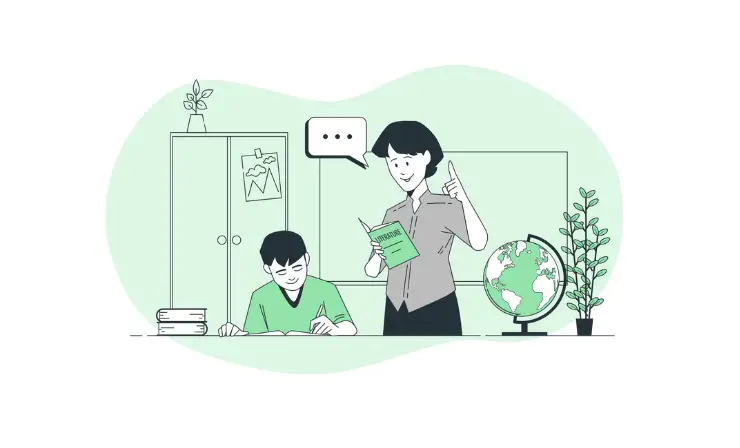
Engage students with relevant lessons and activities designed to spark curiosity through the exploration of their interests, hobbies, or real-world experiences.
Examples of Differentiated Instruction
- Science students are invited to explore the impact of current environmental problems by studying a range of research projects focused on topics like global warming and pollution.
- In a high school English class, students are empowered to explore their literary interests. With an array of intriguing books approved by the teacher and creative freedom in selecting topics and writing formats, this educational experience allows each student to deepen their understanding through individualized discovery.
- At the middle school level, music classes offer students a unique opportunity to explore musical creativity. With differentiated instruction tailored to individual student interests and abilities, every child has access to an immersive experience learning their chosen instrument as they build ability in composition and performance.
- In this unique art class, students of all ages and artistic abilities are encouraged to explore their creative potential. With differentiated instruction tailored specifically for each student’s needs, there is something special here for everyone!
See how the educators at Walter Bracken STEAM Academy engage students by letting them choose outside-the-box enrichment classes, like toy making, drones, and candy chemistry.
4. Curriculum Compacting
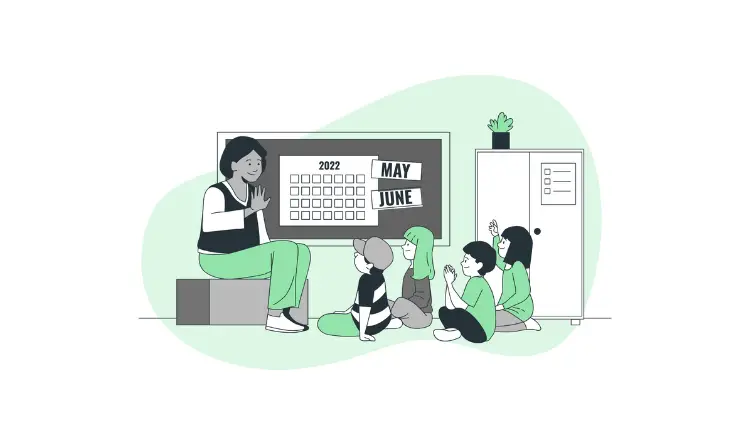
To ensure that all students reach their full potential, this strategy enables advanced learners to challenge themselves with a personalized curriculum tailored to fit individual growth.
Examples of Differentiated Instruction
- Unlocking the power of advanced learners, pre-tests in a math class can uncover their knowledge and identify areas to explore further. Those who demonstrate mastery could access even more complex material that will enrich their understanding of concepts.
- High school math classes are providing students who have already mastered algebra the opportunity to further their education with an advanced course. Through differentiated instruction, these learners receive personalized support needed for successful progression in this more complex subject matter.
- At a local elementary school, students who have master basic science concepts receive the opportunity to take their learning up another notch. With tailored instruction and support from teachers, these driven learners are able to push beyond what is typically taught in class in order for them explore more complex area of scientific exploration.
- At a middle school, students who have already shown excellence in reading can take their education to the next level. By offering differentiated instruction and support, these learners are provided with an opportunity to engage in more advanced material and push towards greater academic achievement.
This video is produced by Gordon Daigle in the Center for Excellence in Teaching and Learning (CETL) at UConn. Here you’ll find some info about Curriculum Compacting.
5. Graphic Organizers
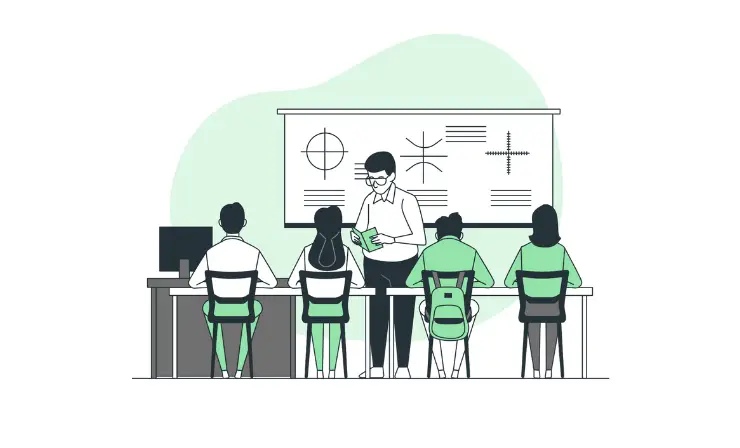
Effective learning can be achieved when students utilize visual aids to structure and commit information to memory. By leveraging visuals, learners are given a valuable tool that increases their comprehension of the material at hand.
Examples of Differentiated Instruction
- By utilizing a Venn diagram in an English class, instructors can assist students in discovering compelling similarities and differences between two characters from the same novel. Through this method of comparison and contrast, learners will have no difficulty exploring intricate relationships within literature!
- With the aid of a graphic organizer, high school history classes can now analyze and compare various historical events with greater clarity. The organizational tool brings focus to identifying influential moments in time, contrasting critical details between pivotal points in our past along with forming meaningful conclusions.
- Elementary school students can tap into their creative side with the help of a graphic organizer! This tool provides structure and guidance as they work through all stages of writing; be it brainstorming, organizing details, or crafting a narrative. A perfect partner in discovering one’s voice on paper!
- In a middle school science class, students are given the tools to look closely at the world around them. Through an interactive graphic organizer, they can identify and explore each step of the scientific method – from making observations and collecting data all the way through drawing conclusions – so that they may examine their environment with deeper insight then ever before!
See how graphic organizers help students organize their thoughts and ideas for answering questions, function as a pre-writing tool for essays, and provide a visual display of information.
6. Student Choice
Empower students to take control of their own learning by allowing them the freedom to select how they demonstrate understanding. This approach helps facilitate a meaningful and engaging educational experience that is tailored to individual student needs.

Examples of Differentiated Instruction
- Music class offers a great opportunity for students to explore their creativity with the power of sound. Through selection of instruments and songs, they can discover new ways to express themselves while learning fundamental music principles essential in any musician’s journey!
- It is important to give students the opportunity to explore and hone their reading skills in an engaging way. By allowing them access to books of interest, across genres and within their comfort levels when it comes to difficulty, they can build a stronger understanding – while enjoying the process too!
- Let students customize their writing experience! Give them the freedom to pick between a narrative, persuasive essay or poem -and then select an engaging topic of their choice like a personal memory or research paper. They’ll be able to craft meaningful projects that align with both school requirements and interests for deeper engagement!
- By providing personalized assessments, students have the opportunity to demonstrate their knowledge and express themselves in a meaningful way. Through writing papers, giving presentations, making videos or podcasts and even developing websites – each student can tap into their individual strengths to showcase what they’ve learned with creativity and confidence!
Learn more about the student choice strategy from Megan McGregor, Head of Virtual Mentorship at Modern Classrooms Project.
7. Flexible Grouping
This strategy ensures that each student is placed in the most beneficial learning environment, with groups continually adjusting to reflect their evolving needs and interests.

Examples of Differentiated Instruction
- Science class students can explore personal interests in the sciences through dynamic projects. Groups of biology, chemistry and physics enthusiasts could work together to bring real-world understanding into their studies.
- Interest Groups provide a unique opportunity to bring together students with shared interests, helping them come up with creative projects that utilize their skills and knowledge. Young gardeners can work on growing vegetables or flowers while those interested in photography have the chance to hone their craft through collaborative photo manipulation projects.
- By grouping students according to their unique learning profiles, we enable them to maximize their individual strengths and capitalize on collaborative opportunities. Visual learners can join forces for a creative visual project such as an art-based presentation or graphic organizer. Meanwhile, those who feel more comfortable with auditory tasks can come together to create audio recordings of stories or develop videos that include artistic elements!
- By utilizing mixed ability grouping, students of varying skill levels come together to foster an enriching learning environment. In such a setting, those who excel in particular areas are able to serve as mentors and help their peers understand concepts more clearly; at the same time struggling learners can offer valuable skills like creative problem-solving or critical thinking that would otherwise be overlooked.
Here is an example of how you can yse flexible groupping in your classroom.
8. Learning Contracts
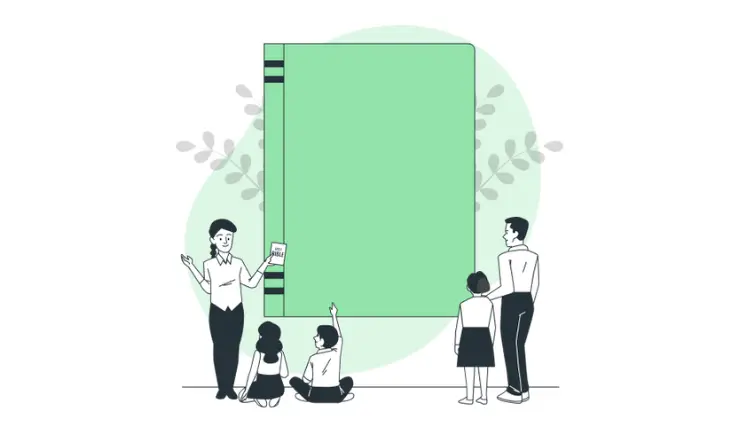
By developing individualized learning contracts with each student, we’re able to empower them to reach their own educational objectives through the completion of tailored tasks.
Examples of Differentiated Instruction
- In order to maximize student success and engagement, a teacher could create an individually tailored learning contract with each of their history students. This agreement would outline the information that needs to be studied, any resources or reference materials needed for completion of assignments, and specific tasks they must complete.
- When it comes to learning, no two students are the same. With personalized education programs in place, each student can take ownership of their growth and development by creating individualized goals and action steps based on what sparks their interest.
- With Self-Paced Learning, students can progress through their studies in an individualized way so they have the opportunity to gain a complete understanding of content. This approach ensures that everyone has ample time and space for learning at their own pace without feeling rushed or overwhelmed.
- With Project-Based Learning, students have the opportunity to showcase their comprehension of a concept or topic in an inventive and meaningful way. By allowing them to design projects that are tailored toward their individual interests, they can apply what they learn with greater enthusiasm while still achieving educational success!
This video describes the basic elements for designing a learning contract for students.
9. Technology Integration

By utilizing technology, we are introducing a unique approach to instruction that empowers students to engage with learning materials. This will foster an enriched educational journey and help promote deeper understanding of the subject material.
Examples of Differentiated Instruction
- Language arts classes can have a digital edge, thanks to tools like Google Classroom! This platform provides teachers with an effective way to deliver instruction and assign fun online activities.
- Through Digital Storytelling, students tap into their creative potential and develop digital literacy skills by creating multimedia stories with a variety of tools! By using programs like Adobe Spark, StoryMap JS, and Google Tour Builder – they are able to put together engaging pieces that incorporate text, images audio video. It’s a great way for them to learn how content can be manipulated in various mediums while further developing project-based learning abilities.
- IWBs are a dynamic teaching tool. For educators, they provide the ability to display and annotate interesting digital content while engaging students in learning activities that foster collaboration with peers during instruction. Students benefit too – using IWBs for presenting work and working together on projects encourages exploration of valuable online resources.
- With interactive simulations and engaging games, students can now explore science concepts or sharpen their problem-solving capabilities in exciting virtual worlds. Technologies like PhET and Concord Consortium help bring complex theories to life while Minecraft provides an immersive atmosphere for learning collaboration skills!
This video provides you with the essentials of the technology integration strategy.
10. Project-Based Learning
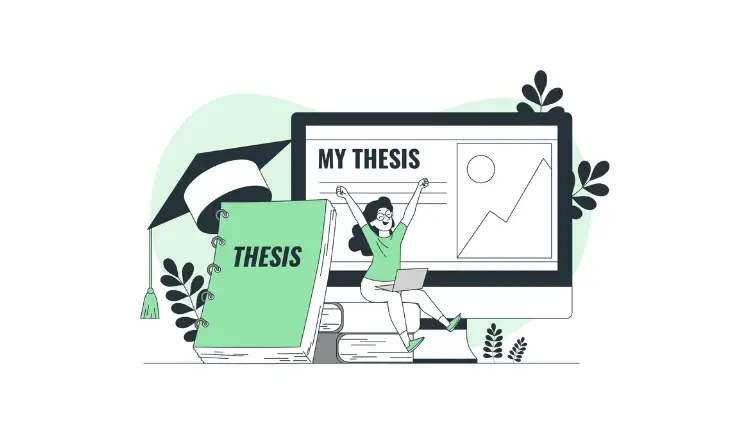
To foster meaningful learning experiences, we propose a collaborative strategy that encourages students to work together on current issues and challenges. Through this approach, they will be able to apply their knowledge while having the opportunity to think critically and creatively.
Examples of Differentiated Instruction
- In a social studies class, students could take on the challenge of researching and proposing solutions to current global issues impacting society today. From human trafficking to climate change – their project would be an opportunity for them to engage in critical thinking while taking meaningful steps towards creating real-world impact!
- Students gain the unique opportunity to take their passions and put them into action, by creating projects that tackle community issues. From designing public awareness campaigns around pressing topics or constructing a sprawling garden for local residents – students can foster academic growth as well develop meaningful social-emotional skills all while making an impact in their neighborhood!
- Students take on real-world design challenges in groups, combining their critical thinking and problem solving skills to tackle problems such as building a durable bridge that can support weight, designing an effective prosthetic limb or constructing sustainable energy systems. This hands-on approach provides students the opportunity to develop collaboration abilities while also gaining valuable insight into engineering process.
- Communication and presentation skills are an invaluable asset for students. Crafting a multimedia project provides them with the chance to develop both digital literacy, as well as essential communication tools such as how to engage listeners in their ideas or stories. Examples of these projects could range from creating video documentaries and designing websites, all the way through to podcasting – allowing student creativity full rein!
In this video, there are many tips and resources to help you get started.
11. Peer Teaching
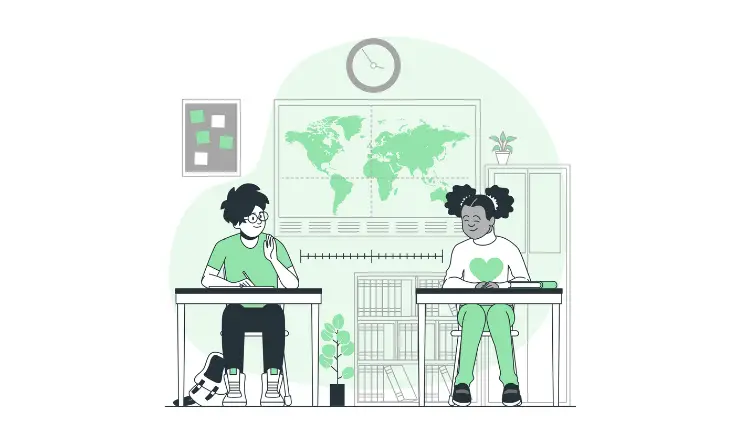
This strategy involves allowing students to teach each other and learn from each other. This strategy involves allowing students to teach each other and learn from each other.
- Learners receive a more personalised learning experience.
- Direct interaction between learners promotes active learning.
- Learners feel more comfortable and open when interacting with a peer.
- Peers share a similar vocabulary, allowing for greater understanding.
- Peer teachers reinforce their own learning by instructing others.
Examples of Differentiated Instruction
- Science students can team up and explore fascinating topics, delving into their research to unearth new discoveries. Presenting these findings is sure to be an engaging experience for everyone in the class!
- The Jigsaw Method is a great way to engage students in the learning process. By breaking them into smaller groups and giving each group distinct pieces of knowledge, they can become experts in their topic before coming together with other like-minded peers through collaboration and communication skills development. This encourages student involvement while preparing individuals for more complex problem solving down the line!
- By using the mentor-mentee relationship in peer tutoring programs, students are able to access personalized instruction while simultaneously working on improving their leadership and compassion. Those with a greater grasp of academic concepts can provide guidance and feedback to peers who require additional assistance—strengthening both parties’ overall education experience.
- Cooperative learning is a method of teaching which promotes critical thinking and social-emotional development by providing students with the opportunity to engage in collaborative problem solving. Through this approach, learners are empowered to take ownership over their own education as well as that of their peers; establishing an environment conducive towards success for everyone involved!
More info about this concept you will find in the video below.
12. Multisensory Instruction

This instructional strategy seeks to immerse students in a multi-sensory experience, tapping into their visual, auditory and tactile learning preferences for an engaging educational journey.
Examples of Differentiated Instruction
- In math classes, geometric concepts can become more accessible and enjoyable when teachers introduce interesting manipulatives such as blocks or cubes. These tools bridge the gap between abstract theory and tangible practice, creating a better overall learning experience.
- Manipulatives provide students with an engaging and tactile learning experience that can help to make abstract concepts more concrete. By using blocks, tiles or other objects in the classroom, multiple senses become involved while paralleling different learning styles; thus allowing new information to be absorbed easier by all kinds of learners.
- Mind mapping is an incredibly powerful tool, helping students to think and create in new ways. This visual strategy can help organize thoughts while also stimulating critical thinking skills and sparking creativity – a great aid for learners of all styles!
- Role-playing offers unique insights into the past, allowing students to inhabit another person’s story and experience it first hand. Through this process, they gain a deeper appreciation for how historical events unfolded without having to be directly involved in them.
In this video, you will find an example of a Literature lesson with multi-sensory methods.
13. Differentiated Homework
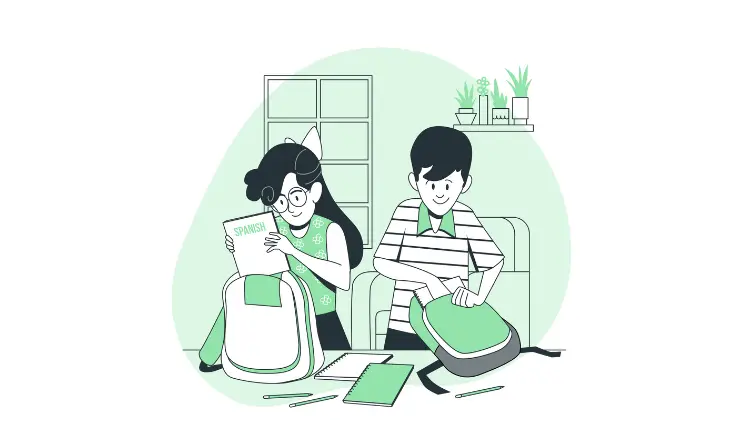
This strategy provides students with options tailored to their interests and learning styles, offering them the chance to take responsibility for their own academic journey. This enables students to focus on assignments they are motivated in completing, helping cultivate a passion-driven approach towards education.
Examples of Differentiated Instruction
- In language arts class, the teacher seeks to challenge students by requesting they read a novel and then write sum-ups of their reading while asking others to further assess it through analysis of its author’s usage of literary devices.
- With Choice Boards, teachers can offer their students the ability to personalize their homework experience – enabling each student to select an assignment that aligns best with both his or her learning style and skill level. By creating a menu of multi-level options for any given lesson, educators have enhanced opportunities for meaningful engagement in differentiated instruction.
- Through homework tiers, educational institutions can provide students with access to differentiated learning experiences. With this strategy, there is an opportunity for a comprehensive range of questions that reflect the various abilities and aptitudes in their class; from straightforward recall tasks up to thought-provoking problems requiring profound application or analysis skills.
- Help your students reach maximum success through custom-crafted Homework Contracts! These agreements provide an individualized map of what is necessary to complete each assignment, outlining the time and effort required while setting appropriate learning objectives. Facilitate engagement and achievement as you guide them along their educational journey.
Here are some differentiated homework tips.
14. Open-Ended Questions
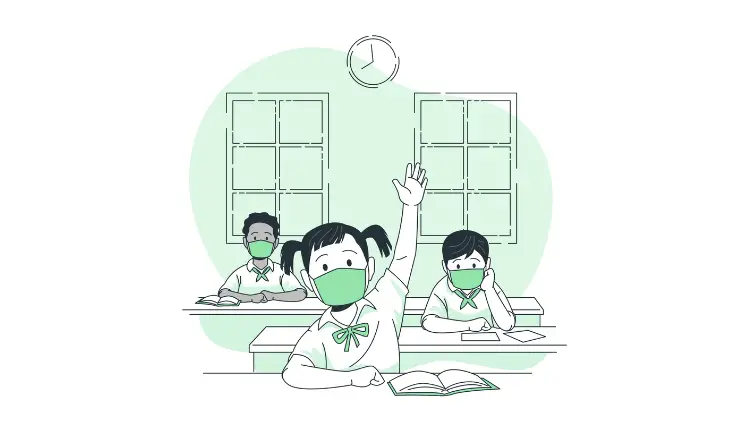
By posing thought provoking inquiries, students can actively engage in creative and critical thinking activities that expand beyond surface level comprehension of a concept. Inviting them to evaluate, analyze or compare concepts allows for more meaningful learning experiences than simple one-word answers allow.
Examples of Differentiated Instruction
- In the classroom, students are encouraged to consider what might have been if alternate choices had shaped a prominent moment in history. Imagining this ‘what-if’ potential provides valuable insight into how decisions and actions can shape our world.
- Engage your students in critical thinking and collaboration with an activity involving Think-Pair-Share. Pose a thought provoking question to the class, then have them pair up to explore their individual perspectives before presenting their ideas as part of a larger group discussion.
- Unlock the power of meaningful discussion through online forums! Offer an opportunity for your students to provide their perspectives on a given topic, and discover new ideas that may not have been explored in the classroom. Fostering effective dialogue can open up paths of learning beyond what traditional methods offer.
- Engage students in the art of discussion! Stimulate their minds with a thought-provoking Socratic Seminar – requiring them to apply critical thinking and analytical skills. Encourage open-ended debates about relevant topics, challenging them to explore new perspectives.
In the video below you’ll learn what an Open Ended Question is how you can help children think through problems on their own.
15. Formative Assessment

As an educator, the ability to assess your students’ understanding of a concept in real-time helps shape effective teaching methods. Formative assessment gives instructors versatile tools – such as quizzes, exit tickets and classroom discussion – so that instructional strategies can be tailored to meet student needs on their learning journey.
Examples of Differentiated Instruction
- With strategic quizzes and brief writings, teachers can unlock insight into the comprehension levels of their students on various topics. This helps shape tailored guidance for each student to maximize growth potential!
- Enable your students to gain knowledge by creating an environment where they can express their understanding of the day’s material with Exit Tickets. These short assessments foster a feedback loop between teacher and student, empowering educators to adjust teaching plans according to individual class needs.
- Engage your students and measure their comprehension with interactive quizzes! Give formative feedback within the lesson period while providing students a direct look at how they’re performing. Put knowledge to work right away, in real time!
- Gather insight into each student’s learning during one-on-one conferences, allowing for the exchange of meaningful questions and individualized feedback. Gain a full picture of how your students are assimilating course material with tailored conversations.
In this video, a teaching team demonstrates how they use formative assessment with students in the classroom to make adjustments and respond to student learning and understanding.
3 More Examples of Differentiated Instructions
Differentiated instruction is an effective way to optimize learning in the classroom and ensure that each individual’s distinct needs are met. To see just how it works, check out these three videos for practical strategies on adapting your teaching style!
1. Differentiation Within the Inclusion Classroom Model
Through a co-teaching model specially designed for students with mild to moderate special education needs, teachers are able to use an inclusive approach while providing differentiated instruction. A collaborative planning process and assessments of student readiness ensure that all learners can take the reins on their learning journey.
2. Differentiating Instruction to Reach All Students
Through their differentiated approach to instruction, this first-grade classroom creates an engaging learning experience for students. They provide a flexible environment in which each student is given the freedom to learn based on individual needs and preferences through rotating station activities that include computer time, sorting tasks and teacher support. With tailored lessons to meet personal goals set at every level of mastery, students are both successful and motivated by the results of differentiation!
3. Differentiating Instruction Through Interactive Games
In this video, the teacher shares his innovative approach to teaching. Through using Planet Turtle for math instruction and providing students with multiple tools like whiteboards and fingers, he ensures that each student can find the method best suited to their individual needs. This tech-savvy educator emphasizes how computers should only supplement strategies already in use rather than making technology a sole resource.
Keep Learning
- Edutopia is an invaluable resource for teachers, offering valuable insight and strategies to help differentiate instruction in the classroom. With a variety of articles, videos, and lesson plans available among other engaging resources, it’s no wonder why this website has become such an essential part of many classrooms!
- Teaching Channel is a comprehensive platform that offers teachers an opportunity to gain insight into various teaching strategies. Through their innovative “Differentiated Instruction” section, educators can learn from experienced peers and tap into inspiring discussions about how to implement the best practices in their classrooms.
- ASCD empowers educators with a wealth of resources to improve student success. Their selection includes books, articles and online courses in the differentiated instruction strategies list ranging from strategies to implementation tips and assessment methods – all designed to make teachers more effective!
Teachers have access to a comprehensive range of resources that share actionable strategies on how best to implement differentiated instruction in the classroom. Taking advantage of these invaluable tools serves as an ideal opportunity for teachers to continue developing their practice, ultimately resulting in positive outcomes and success for students.
Conclusion
Using differentiated instruction strategies, teachers can create an engaging learning experience and give students the opportunity to fulfill their academic potential. Through thoughtful planning, implementation of diverse strategies, and access to resources that support individual needs, educators are well-equipped with the tools necessary for success in fostering student achievement. Ultimately enabling learners to reach heights they never thought possible!

Simona Johnes is the visionary being the creation of our project. Johnes spent much of her career in the classroom working with students. And, after many years in the classroom, Johnes became a principal.
Follow Simona: 


Latest posts by Simona Johnes (see all)
- 22 Essential Strategies to Check for Understanding: Enhancing Classroom Engagement and Learning - May 20, 2024
- 24 Innovative and Fun Periodic Table Project Ideas to Engage and Inspire Students in Chemistry Learning - May 9, 2024
- 28 Exciting Yarn Crafts for Preschool Kids: Igniting Creativity and Fine Motor Skills - April 29, 2024





















